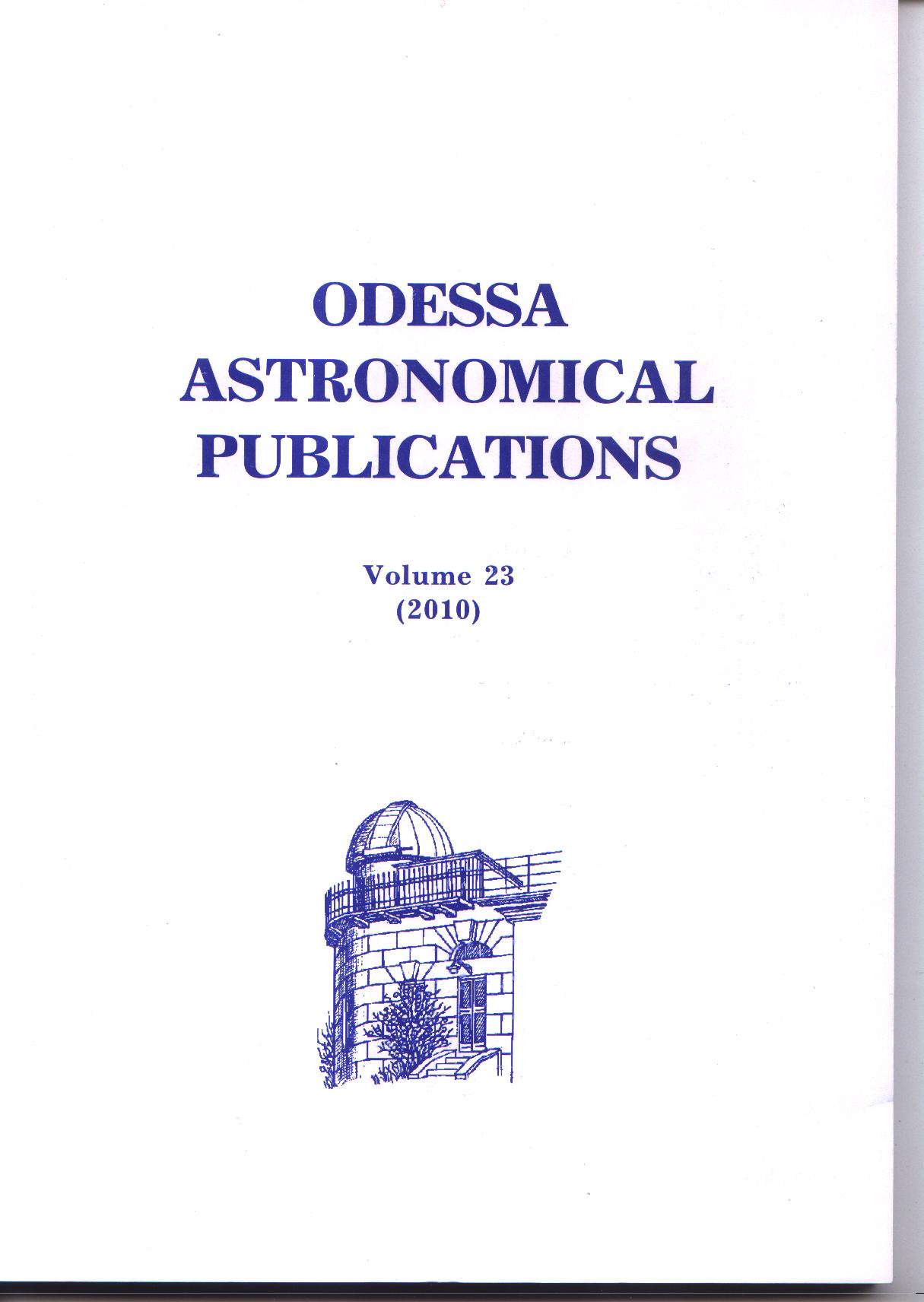SPECTROSCOPIC ANALYSIS OF OSCILLATING ALGOL-TYPE SYSTEMS
DOI:
https://doi.org/10.18524/1810-4215.2010.23.85248Ключові слова:
Stars, binary, eclipsing, variables, Algols, individual, RZ Cas.Анотація
We analyze time-series of highresolutionspectra of RZCas, one of the brightest Algoltype
stars where the primary shows δ Sct-like oscillations.
Our inverstigation uses a variety of methods like
the KOREL program to derive the orbital solution and
to decompose the spectra of the binary components,
the SynthV program to derive the elemental abundances
of both components from the mean, decomposed
spectra, and finally the newly developed Shellspec07_inverse
program to compute optimized stellar
parameters from the composite line profiles observed
at different orbital phases including the eclipse mapping.
Spectra of RZ Cas have been taken at two different
epochs. In 2006, the system can be well modeled
without including any Algol-typical effects like a
gas stream or an accretion annulus into the calculations.
We have only to assume that the secondary of
RZCas shows a large dark spot on its surface pointing
toward the primary, presumably originating from a
cooling mechanism by the enthalpy transport via the
inner Lagrangian point. The O-C residuals of our solution
based on the spectra from 2001 show a complex
distribution of circumbinary matter, however, pointing
to the occurrence of an episode of rapid mass transfer.
This assumption is supported by the deduced change
of the orbital period of RZCas of 2 seconds between
the two epochs of observations.
Numerical simulations of the spatial filtration effect
that occures during the primary eclipse showed that
this effect can be used for an identification of the excited
non-radial pulsation modes in terms of l and m
numbers.
Посилання
Budaj J., Richards M.T.: 2004,CoSka,34, 167
Donati J.-F., Semel M., Carter B. D., et al.: 1997,MNRAS,291, 658
Gustafsson B., Edvardsson B., Eriksson K. et al.: 2008,A&A,486, 951
Hadrava P.: 2004,Publ. Astron. Inst. ASCR,92,15
Kurucz R.L.: 1995,ASPC,78, 205
Lehmann H., Mkrtichian D.E.: 2004,A&A,413, 293
Lehmann H., Mkrtichian D.E.: 2008,A&A,480, 247
Levenberg K.: 1944,Quart. J. Appl. Math.,2, 164
Lucy L.B.: 1967,Zs.f.Ap.,65,89
Marquardt D. W.: 1963,J. Soc. Indust. Appl. Math., 11, 431
Mkrtichian D.E., Kusakin A.V., Gamarova A.Yu., et al.: 2002,PASPC,259, 96.
Mkrtichian D. E., Nazarenko V., Gamarova A. Yu., et al.: 2003,PASPC,292, 113
Narusawa S.-Y., Nakamura Y., Yamasaki A.: 1994,AJ,107, 1141
Ohshima O., Narusawa S.-Y., Akazawa H., et al.: 1998,IBVS,4581
Ohshima O., Narusawa S.-Y., Akazawa H., et al.: 2001,AJ,122, 418
Olson E.C.: 1982,ApJ,259, 702
Piskunov N., Kochukhov O.: 2002,A&A,381, 736
Rodriguez E., Garcia J.M., Mkrtichian D.E., et al.: 2004,MNRAS,347, 1317
Rossiter R.A.: 1924,ApJ,69,15
Shulyak D., Tsymbal V., Ryabchikova T., et al.: 2004,A&A,428, 993
Tkachenko A., Lehmann H., Mkrtichian D. E.: 2009,A&A,504, 991
Tsymbal V.: 1996,ASPC,108, 198
Varricatt W.P., Ashok N.M., Chandrasekhar T.: 1998,AJ,116, 1447
##submission.downloads##
Опубліковано
Номер
Розділ
Ліцензія
Авторське право (c) 2016 Odessa Astronomical Publications

Ця робота ліцензується відповідно до Creative Commons Attribution-NonCommercial 4.0 International License.
Відповідно Закону України про авторське право і суміжні права N 3792-XII від 23 грудня 1993 року
